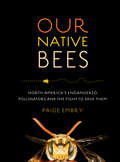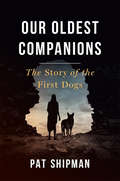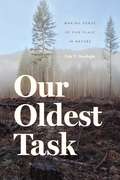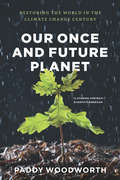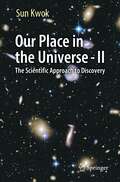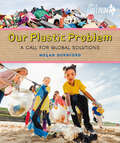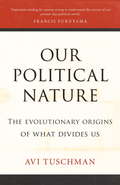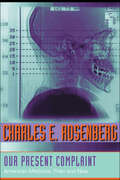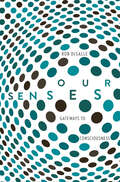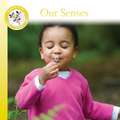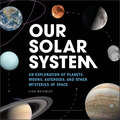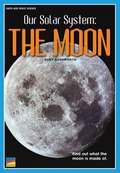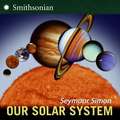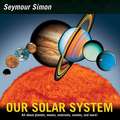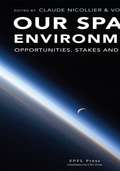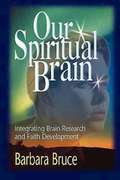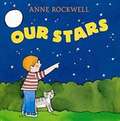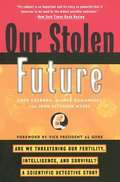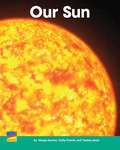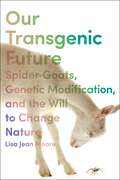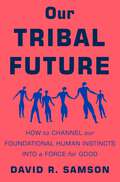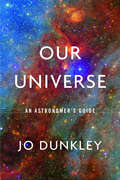- Table View
- List View
Our Native Bees: North America's Endangered Pollinators and the Fight to Save Them
by Paige Embry"Captures the essence of a bee’s natural history and how we use (and sometimes abuse) bees.” —Olivia Messinger Carril, author of The Bees in Your Backyard Honey bees get all the press, but the fascinating story of North America’s native bees—an endangered species essential to our ecosystems and food supplies—is just as crucial. Through interviews with farmers, gardeners, scientists, and bee experts, Our Native Bees explores the importance of native bees and focuses on why they play a key role in gardening and agriculture. The people and stories are compelling: Paige Embry goes on a bee hunt with the world expert on the likely extinct Franklin’s bumble bee, raises blue orchard bees in her refrigerator, and learns about an organization that turns the out-of-play areas in golf courses into pollinator habitats. Our Native Bees is a fascinating, must-read for fans of natural history and science and anyone curious about bees.
Our Oldest Companions: The Story of the First Dogs
by Pat ShipmanHow did the dog become man’s best friend? A celebrated anthropologist unearths the mysterious origins of the unique partnership that rewrote the history of both species. Dogs and humans have been inseparable for more than 40,000 years. The relationship has proved to be a pivotal development in our evolutionary history. The same is also true for our canine friends; our connection with them has had much to do with their essential nature and survival. How and why did humans and dogs find their futures together, and how have these close companions (literally) shaped each other? Award-winning anthropologist Pat Shipman finds answers in prehistory and the present day. In Our Oldest Companions, Shipman untangles the genetic and archaeological evidence of the first dogs. She follows the trail of the wolf-dog, neither prehistoric wolf nor modern dog, whose bones offer tantalizing clues about the earliest stages of domestication. She considers the enigma of the dingo, not quite domesticated yet not entirely wild, who has lived intimately with humans for thousands of years while actively resisting control or training. Shipman tells how scientists are shedding new light on the origins of the unique relationship between our two species, revealing how deep bonds formed between humans and canines as our guardians, playmates, shepherds, and hunters. Along the journey together, dogs have changed physically, behaviorally, and emotionally, as humans too have been transformed. Dogs’ labor dramatically expanded the range of human capability, altering our diets and habitats and contributing to our very survival. Shipman proves that we cannot understand our own history as a species without recognizing the central role that dogs have played in it.
Our Oldest Task: Making Sense of Our Place in Nature
by Eric T. Freyfogle“This is a book about nature and culture,” Eric T. Freyfogle writes, “about our place and plight on earth, and the nagging challenges we face in living on it in ways that might endure.” Challenges, he says, we are clearly failing to meet. Harking back to a key phrase from the essays of eminent American conservationist Aldo Leopold, Our Oldest Task spins together lessons from history and philosophy, the life sciences and politics, economics and cultural studies in a personal, erudite quest to understand how we might live on—and in accord with—the land. Passionate and pragmatic, extraordinarily well read and eloquent, Freyfogle details a host of forces that have produced our self-defeating ethos of human exceptionalism. It is this outlook, he argues, not a lack of scientific knowledge or inadequate technology, that is the primary cause of our ecological predicament. Seeking to comprehend both the multifaceted complexity of contemporary environmental problems and the zeitgeist as it unfolds, Freyfogle explores such diverse topics as morality, the nature of reality (and the reality of nature), animal welfare, social justice movements, and market politics. The result is a learned and inspiring rallying cry to achieve balance, a call to use our knowledge to more accurately identify the dividing line between living in and on the world and destruction. “To use nature,” Freyfogle writes, “but not to abuse it.”
Our Once and Future Planet: Restoring the World in the Climate Change Century
by Paddy WoodworthThe environmental movement is plagued by pessimism. And that’s not unreasonable: with so many complicated, seemingly intractable problems facing the planet, coupled with a need to convince people of the dangers we face, it’s hard not to focus on the negative But that paints an unbalanced—and overly disheartening—picture of what’s going on with environmental stewardship today. There are success stories, and Our Once and Future Planet delivers a fascinating account of one of the most impressive areas of current environmental experimentation and innovation: ecological restoration. Veteran investigative reporter Paddy Woodworth has spent years traveling the globe and talking with people—scientists, politicians, and ordinary citizens—who are working on the front lines of the battle against environmental degradation. At sites ranging from Mexico to New Zealand and Chicago to Cape Town, Woodworth shows us the striking successes (and a few humbling failures) of groups that are attempting to use cutting-edge science to restore blighted, polluted, and otherwise troubled landscapes to states of ecological health—and, in some of the most controversial cases, to particular moments in historical time, before widespread human intervention. His firsthand field reports and interviews with participants reveal the promise, power, and limitations of restoration. Ecological restoration alone won’t solve the myriad problems facing our environment. But Our Once and Future Planet demonstrates the role it can play, and the hope, inspiration, and new knowledge that can come from saving even one small patch of earth.
Our Once and Future Planet: Restoring the World in the Climate Change Century
by Paddy WoodworthThe environmental movement is plagued by pessimism. And that’s not unreasonable: with so many complicated, seemingly intractable problems facing the planet, coupled with a need to convince people of the dangers we face, it’s hard not to focus on the negative But that paints an unbalanced—and overly disheartening—picture of what’s going on with environmental stewardship today. There are success stories, and Our Once and Future Planet delivers a fascinating account of one of the most impressive areas of current environmental experimentation and innovation: ecological restoration. Veteran investigative reporter Paddy Woodworth has spent years traveling the globe and talking with people—scientists, politicians, and ordinary citizens—who are working on the front lines of the battle against environmental degradation. At sites ranging from Mexico to New Zealand and Chicago to Cape Town, Woodworth shows us the striking successes (and a few humbling failures) of groups that are attempting to use cutting-edge science to restore blighted, polluted, and otherwise troubled landscapes to states of ecological health—and, in some of the most controversial cases, to particular moments in historical time, before widespread human intervention. His firsthand field reports and interviews with participants reveal the promise, power, and limitations of restoration. Ecological restoration alone won’t solve the myriad problems facing our environment. But Our Once and Future Planet demonstrates the role it can play, and the hope, inspiration, and new knowledge that can come from saving even one small patch of earth.
Our Place in the Universe - II: The Scientific Approach to Discovery
by Sun KwokStarting from Newton’s times this follow-up to the author’s Springer book “Our Place in the Universe - Understanding Fundamental Astronomy from Ancient Discoveries” addresses the question of “our place in the Universe” from astronomical, physical, chemical, biological, philosophical and social perspectives.Using the history of astronomy to illustrate the process of discovery, the emphasis is on the description of the process of how we learned and on the exploration of the impacts of discoveries rather than on the presentation of facts. Thus readers are informed of the influence of science on a broad scale.Unlike the traditional way of teaching science, in this book, the author begins by describing the observations and then discusses various attempts to find answers (including unsuccessful ones). The goal is to help students develop a better appreciation of the scientific process and learn from this process to tackle real-life problems.
Our Plastic Problem: A Call for Global Solutions (Orca Footprints #33)
by Megan DurnfordWe have a serious plastic problem. What was supposed to be a miracle material when it was first invented is now one of the biggest sources of pollution on our planet. But where does plastic come from? Why do we use so much of it? How does it hurt the environment and the animals who live there? Our Plastic Problem looks at plastic's history, uses, and how it affects land, water, air and human health. It also explores innovations in bioplastic and recycling, and practical ways to reduce and replace the plastic in our lives. Working together, we can solve our plastic problem.
Our Political Nature
by Avi TuschmanThe first book to tell the natural history of political orientations. Our Political Nature is the first book to reveal the hidden roots of our most deeply held moral values. It shows how political orientations across space and time arise from three clusters of measurable personality traits. These clusters entail opposing attitudes toward tribalism, inequality, and differing perceptions of human nature. Together, these traits are by far the most powerful cause of left-right voting, even leading people to regularly vote against their economic interests. As this book explains, our political personalities also influence our likely choice of a mate, and shape society's larger reproductive patterns. Most importantly of all, it tells the evolutionary stories of these crucial personality traits, which stem from epic biological conflicts. Based on dozens of exciting new insights from primatology, genetics, neuroscience, and anthropology, this groundbreaking work brings core concepts to life through current news stories and personalities. For instance, readers will meet Glenn Beck and Hugo Chavez and come to understand the underlying evolutionary forces they represent. By blending serious research with relevant contemporary examples, Our Political Nature casts important light onto the ideological clashes that so dangerously divide and imperil our world today.From the Hardcover edition.
Our Present Complaint: American Medicine, Then and Now
by Charles E. RosenbergCharles E. Rosenberg, one of the world's most influential historians of medicine, presents a fascinating analysis of the current tensions in American medicine. Situating these tensions within their historical and social contexts, Rosenberg investigates the fundamental characteristics of medicine: how we think about disease, how the medical profession thinks about itself and its moral and intellectual responsibilities, and what prospective patients—all of us—expect from medicine and the medical profession. He explores the nature and definition of disease and how ideas of disease causation reflect social values and cultural negotiations. His analyses of alternative medicine and bioethics consider the historically specific ways in which we define and seek to control what is appropriately medical. At a time when clinical care and biomedical research generate as much angst as they offer cures, this volume provides valuable insight into how the practice of medicine has evolved, where it is going, and how lessons from history can improve its prognosis.
Our Senses: Gateways to Consciousness
by Rob DeSalle“An animated introduction to the neuroscience of sensory perception” informed by the latest research on topics from music to brain injuries to synesthesia (Kirkus Reviews).In recent years neuroscience has uncovered a wealth of new information about our senses and how they serve as our gateway to the world. This splendidly accessible book explores the most intriguing findings of this research. With infectious enthusiasm, Rob DeSalle illuminates not only how we see, hear, smell, touch, taste, maintain balance, feel pain, and rely on other less familiar senses, but also how these senses shape our perception of the world aesthetically, artistically, and musically.DeSalle first examines the question of how perception and consciousness are formed in the brain, setting human senses in an evolutionary context. He then investigates such varied themes as supersenses and diminished senses, synesthesia and other cross-sensory phenomena, hemispheric specialization, diseases, anomalies induced by brain injuries, and hallucinations. Focusing on what is revealed about our senses through the extraordinary, he provides unparalleled insights into the unique wonders of the human brain.“In the laboratory sensory science is serious business. But in the capable hands of Rob DeSalle it becomes fun and compelling for the general reader, and is made all the more accessible by Patricia Wynne’s delightful illustrations.” —Ian Tattersall, author of The Strange Case of the Rickety Cossack and Other Cautionary Tales from Human Evolution
Our Solar System: An Exploration of Planets, Moons, Asteroids, and Other Mysteries of Space
by Lisa ReichleySuit up for an expedition into the mysteries of our amazing solar system and beyondThe universe is huge. With more than 100 billion galaxies and billions of orbiting astronomical bodies, there's so much to learn. Rocket through the cosmos, and discover everything there is to know about our exciting and mysterious solar system!From the bright, burning sun to the icy Kuiper Belt, this easy reference guide is packed with fascinating facts about the terrestrial planets, gas giants, and dwarf planets, plus other orbiting astronomical bodies such as satellites and asteroids. Then, explore further into the unknown as you learn about mysterious bodies such as comets and clouds, and how much more we have to discover!Our Solar System includes:Fact-filled flight—Learn all about the astronomical bodies in our solar system with profiles covering size, distance from the sun, the length of each year, and more.Tiny but mighty—Enjoy a detailed look at the smaller bodies in our solar system such as dwarf planets, satellites, asteroids, and the objects in the Kuiper Belt and the Oort cloud.Out-of-this-world photos—Get up close and personal with real, vibrant photos of our very special solar system.Rocket through the cosmos and explore the many mysteries of our magnificent solar system!
Our Solar System: The Moon
by Garry Rushworth Pam HirschfeldFind out about where the moon came from and find out about its properties.
Our Solar System
by Seymour SimonBorn almost 5 billion years ago at the edge of the Milky Way galaxy, our Solar System is a place filled with mystery and wonder. In the last fifty years, we have learned more than ever about the farthest reaches of our world. With dramatic full-color photographs and spacecraft images, Our Solar System takes young readers on a fascinating tour of the sun, the eight planets, and their moons, plus asteroids, comets, and meteoroids. Award-winning science writer Seymour Simon has teamed up with the Smithsonian Institution on this new, updated edition of his much admired book about the vast and mystifying part of the universe that we live in.
Our Solar System: Revised Edition (Seymour Simon Science Ser.)
by Seymour SimonJoin award-winning science writer Seymour Simon in this completely updated edition of Our Solar System, as he takes young readers on a fascinating tour through space! With beautiful full-color photographs and spacecraft images, including many taken by the Mars rovers and Hubble Space Telescope, this nonfiction picture book teaches young readers all about the solar system, including the sun, the eight planets, and their moons. Covering all the latest discoveries in space, young astronomers will be over the moon about the fun facts, fascinating science, and incredible photographs. A must-have for every child interested in outer space! This book includes an author's note, a glossary, an index, and further reading suggestions. An excellent choice for classrooms and homeschooling, Our Solar System supports the Common Core State Standards.Check out these other Seymour Simon books about the universe and space:Comets, Meteors, and AsteroidsDestination: JupiterDestination: MarsDestination: SpaceExoplanetsGalaxiesStarsThe SunThe Universe
Our Space Environment, Opportunities, Stakes and Dangers
by Claude Nicollier Roger-Maurice BonnetThe space surrounding our planet is full of opportunities and resources. Ranging from a hundred to a few thousand kilometers around Earth, our space-neighborhood offers an excellent vantage point to the universe, and a great opportunity to push the frontiers of science and knowledge. Manned missions advance research on human biology, health, and li
Our Spiritual Brain: Integrating Brain Research and Faith Development
by Barbara BruceBrain research is about making discoveries. It is about learning how this most amazing organism works and how it influences every aspect of your life. As religious educators, you need to know how the brain functions and how to translate that information into better, more usable lessons to help students continue, with depth and purpose, on their journey of faith. The first section of this book is a brief background of the brain research that is fascinating so many people in so many fields today. The second section is about learning, particularly brain-based learning. The third section is divided into twelve segments. Each segment is a practical application to Christian education based on the findings in brain research. The fourth section will help you to take your learning about the brain into new areas of discovery.
Our Stars
by Anne RockwellScientists use telescopes and satellites to study the stars. But even though they're far away, stars are part of your world, too! Just lift up your eyes to see. Anne Rockwell explains the universe with bright pictures and simple text in a book that will delight any curious child's mind!
Our Stolen Future: Are We Threatening Our Fertility, Intelligence, and Survival? A Scientific Detective Story
by Theo Colborn Dianne Dumanoski John Peterson MyersOver thirty years ago, Rachel Carson's Silent Spring first warned that man-made chemicals were taking a deadly toll on birds and wildlife. Only now, however, are we recognizing the full consequences of this insidious threat, which is derailing sexual development and reproduction-not only in a host of animal populations but, it appears, in humans as well. Written by two leading environmental scientists and an award-winning environmental journalist, Our Stolen Future has already become one of the most controversial and talked-about books of the decade. Picking up where Silent Spring left off, this groundbreaking work gives an utterly gripping account that traces birth defects, sexual abnormalities, and reproductive failures in wildlife to their source-synthetic chemicals that mimic natural hormones, upsetting normal reproductive and developmental processes. And humans appear far from immune to the effects of these "hormone impostors." Male sperm counts have dropped as much as 50 percent in recent decades, while women have suffered a dramatic rise in hormone-related cancers, endometriosis, and other disorders. By threatening the ability to reproduce, these chemicals may be invisibly undermining the human future. Piecing together the clues, the authors detail how these industrial pollutants have spread with ease through the web of life from the equator to the poles, and explore what we can and must do to combat this invasion. Timely, urgent, and scrupulously reported, this riveting story of scientific detection will have a major impact on public debate for decades to come. It is indispensable for those concerned about the profound human impact on the environment, the well-being of our children, and the survival of our species.
Our Sun
by Margie Burton Cathy French Tammy Jones Kathleen Kuchera Martin SeddonThis book is about the properties of the sun.
Our Transgenic Future: Spider Goats, Genetic Modification, and the Will to Change Nature
by Lisa Jean MooreHow scientific advances in genetic modification will fundamentally change the natural worldThe process of manipulating the genetic material of one animal to include the DNA of another creates a new transgenic organism. Several animals, notably goats, mice, sheep, and cattle are now genetically modified in this way. In Our Transgenic Future, Lisa Jean Moore wonders what such scientific advances portend. Will the natural world become so modified that it ceases to exist? After turning species into hybrids, can we ever get back to the original, or are they forever lost? Does genetic manipulation make better lives possible, and if so, for whom?Moore centers the story on goats that have been engineered by the US military and civilian scientists using the DNA of spiders. The goat’s milk contains a spider-silk protein fiber; it can be spun into ultra-strong fabric that can be used to manufacture lightweight military body armor. Researchers also hope the transgenically produced spider silk will revolutionize medicine with biocompatible medical inserts such as prosthetics and bandages. Based on in-depth research with spiders in Florida and transgenic goats in Utah, Our Transgenic Future focuses on how these spidergoats came into existence, the researchers who maintain them, the funders who have made their lives possible, and how they fit into the larger science of transgenics and synthetics. This book is a fascinating story about the possibilities of science and the likely futures that may come.
Our Tribal Future: How to Channel Our Foundational Human Instincts into a Force for Good
by David R. SamsonAn astounding and inspiring look at the science behind tribalism, and how we can learn to harness it to improve the world around us.What do you think of when you hear the word “tribalism?” For many, it conjures images of bigotry, xenophobia, and sectarian violence. Others may envision their own tribe: family, friends, and the bonds of loyalty that keep them together. Tribalism is one of the most complex and ancient evolutionary forces; it gave us the capacity for cooperation and competition, and allowed us to navigate increasingly complex social landscapes. It is so powerful that it can predict our behavior even better than race, class, gender, or religion. But in our vast modern world, has this blessing become a curse?Our Tribal Future explores a central paradox of our species: how altruism, community, kindness, and genocide are all driven by the same core adaptation. Evolutionary anthropologist David R. Samson engages with cutting-edge science and philosophy, as well as his own field research with small-scale societies and wild chimpanzees, to explain the science, ethics, and history of tribalism in compelling and accessible terms.This bold and brilliant book reveals provocative truths about our nature. Readers will discover that tribalism cannot, and should not, be eliminated entirely—to do so would be to destroy what makes us human. But is it possible to channel the best of this instinct to enrich our lives while containing the worst of its dangers?
Our Universe: An Astromer's Guide
by Jo DunkleyJo Dunkley combines her expertise as an astrophysicist with her talents as a writer and teacher to present an elegant introduction to the structure, history, and enduring mysteries of the universe. Among the cutting-edge phenomena discussed are the accelerating expansion of the universe and the possibility that our universe is only one of many.
Our War on Ourselves
by Willem H. VanderburgOur approach to knowing and doing is based on delegating physical phenomena to physicists, biological phenomena to biologists, social phenomena to sociologists, economic phenomena to economists, and so on. This approach to knowledge and practice works very well when one category of phenomena dominates (as in mechanical and technical systems), but does not work when many categories of phenomena make significant contributions (as in the biological and cultural spheres). As a result, our civilization succeeds in its scientific and technical endeavours yet fails in dealing with communities and ecosystems.Following his groundbreaking Labyrinth of Technology and Living in the Labyrinth of Technology, Willem H. Vanderburg's Our War on Ourselves explores the type of war we have unleashed on our lives by emphasizing discipline-based processes. The work also illuminates how we can achieve a more balanced, livable, and sustainable future by combining technical and cultural perspectives in our educational and institutional settings.
